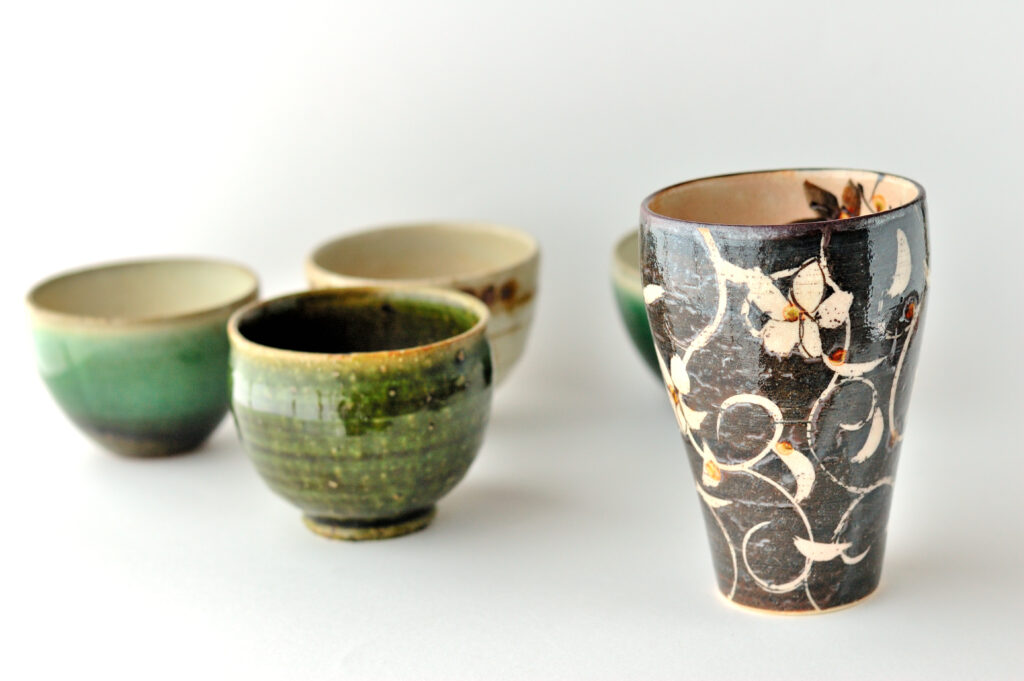2024.05.23
宙ちゃんの「伝統文化一直線」宙ちゃんの「伝統文化一直線」 第5回 衝撃の価格データ
近藤宙時=日本伝統文化検定協会理事

写真/美濃焼のカップ
かれこれ40年近くも忘れることができないデータがあります。岐阜県庁勤務時代、美濃焼の産地として知られる多治見市、土岐市、瑞浪市の振興を担当していた時でした。当時の名古屋税関長さんが広報誌か何かに書いたコラムで、国内外の主だった陶磁器の1キロ当たり輸出入価格を紹介していたのです。古い話なので若干の誤差はあると思いますが、美濃焼が1キロ当たり390円、瀬戸焼(いわゆる瀬戸物)が640円、有田焼が950円、京焼が1450円、そしてドイツのマイセンが4500円だったと記憶(※)しています。
マイセンは元来、日本の磁器、とりわけ有田焼のコピーから始まった焼き物です。それが、本家の有田焼の5倍近く、美濃焼の10倍を超える価格で売れていることは衝撃的で、同時に悔しくて仕方ありませんでした。しかも、これは陶磁器に限った話ではないのです。
今、私が毎日歩く東京・銀座には有名海外ブランドのショップが林立し、店の外には長蛇の列ができています。一方、それら海外ブランドよりも長い歴史を持つ日本の伝統産業のショップは数えるほどしかありません。ルイ・ヴィトンなど有名ブランドを束ねるフランスのコングロマリット(複合企業)、LVMHの直近の年間売上高は13兆円を超えたそうですが、日本の伝統工芸のそれは全て合わせても1千億円を下回っています。
「この差は何だろう」「この差を生んだものは何だったのか」。頭の隅でずっと考えてきました。一つには明治以来の舶来至上主義や欧米礼賛、その反動としての日本の伝統文化軽視、さらには自分を卑下したり、家族や地元といった自分に近いものを謙遜したりすることを善しとする、日本人特有の意識が重なった結果ではないか。
ならば、日本の伝統文化の素晴らしさを、まずは日本人自身に知ってもらうこと、理解してもらうことが、遠回りのように見えて実は「いの一番」に取り組むべき最も根本的な振興策になるのではないかと思いました。ちょうど宇都宮の餃子が、宇都宮の人々が愛してやまないからこそ全国ブランドになったように。それを作っている産地の人間がそれを知らないでは、世界に受け入れられるはずがありません。
明治維新から150年、戦後も80年近くがたち、謙虚過ぎる日本人の間にも、ようやく日本の良さを見詰め直そうという機運が出てきたように思えます。SGDs(持続可能な開発目標)が叫ばれる中、日本の文化に注目してくれるインバウンド(訪日外国人旅行者)が増加した今こそ、日本人が日本の伝統文化に目を向けるべき時だと確信しています。
※岐阜県の工業統計によると、2022年度の美濃焼の1キロ当たり出荷額は442円。日本全体の飲食器出荷額も、生産シェアで5割近くを占める美濃焼に引っ張られて1キロ当たり584円でした。記憶はおおむね実態と合っていそうです。
カテゴリー: 宙ちゃんの「伝統文化一直線」
関連タグ: #陶磁器





